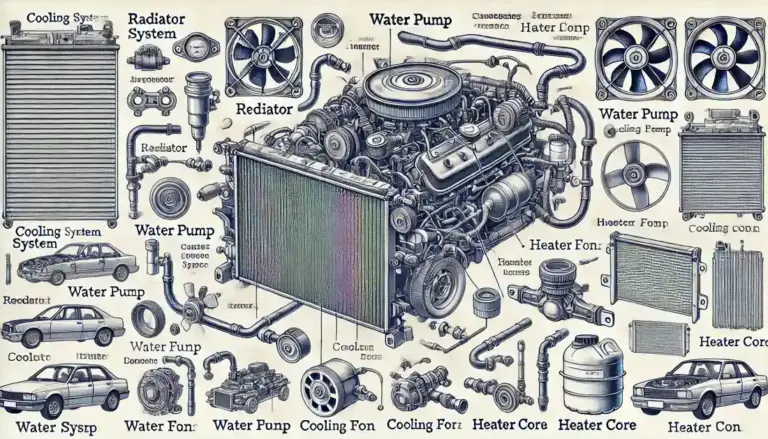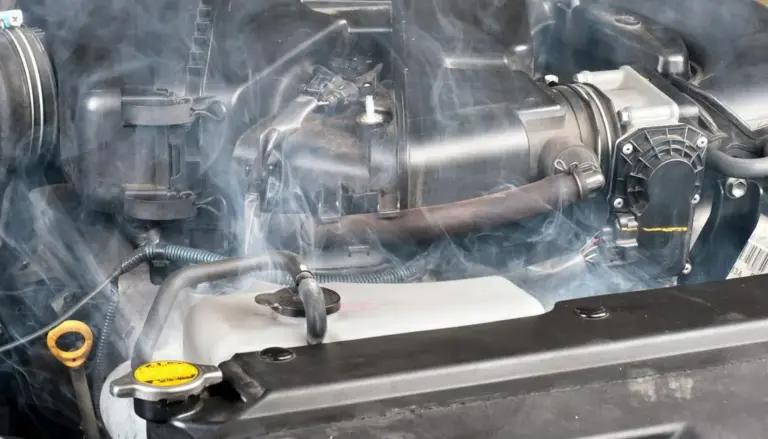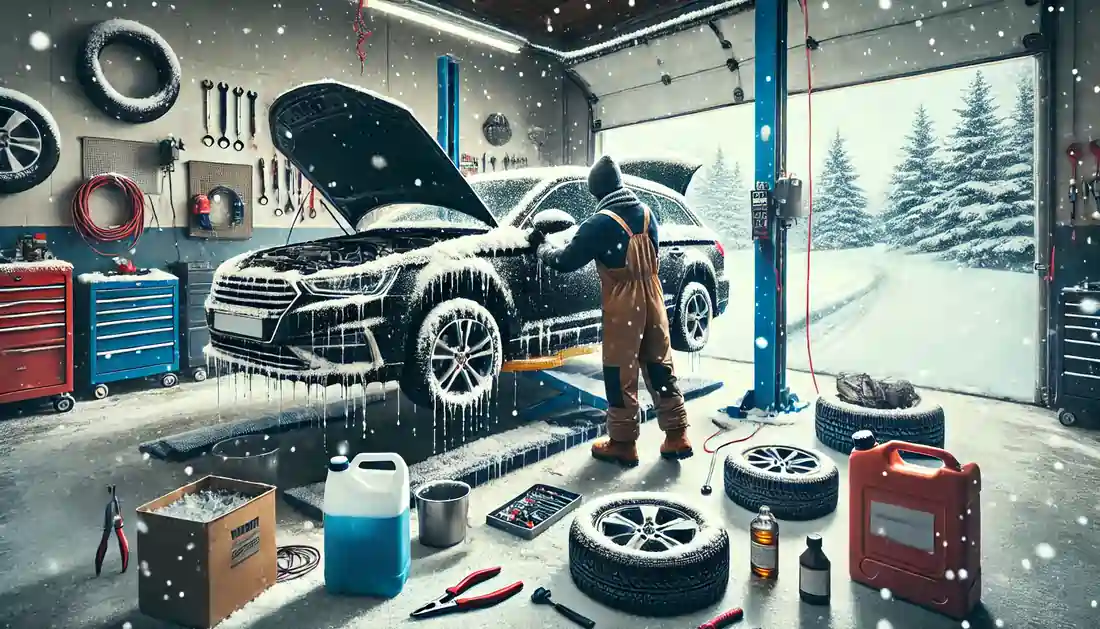Maintaining your car’s cooling system is crucial for keeping your engine running smoothly and preventing expensive repairs.
The cooling system is responsible for regulating the engine’s temperature, ensuring it doesn’t overheat during operation. If left unchecked, an overheating engine can lead to significant damage that may require costly repairs. Regular maintenance helps avoid these issues and ensures your vehicle performs at its best.
In this guide, we’ll walk you through the essential steps to maintain your car’s cooling system, brought to you by T Autocare.
Key Components of Your Car’s Cooling System
Your car’s cooling system has several important parts. Each one plays a role in keeping the engine at the right temperature. Here’s a simple guide to the key parts you need to know about:

1. Radiator
The radiator cools your engine. It lowers the temperature of the coolant before it goes back into the engine. Keeping your radiator in good shape helps stop your engine from overheating. This is very important during long trips or in hot weather. Before a summer road trip, check your radiator and cooling system to make sure they work well.
For more tips, see our guide on preparing your car for summer road trips.
2. Water Pump
The water pump moves the coolant through the engine and radiator. If the water pump breaks, your car can overheat. Regular checkups can help avoid this. You can read more about water pump replacement if you’re interested.
3. Thermostat
The thermostat makes sure the coolant stays at the right temperature. If it stops working, the engine could get too hot. Learn about thermostat replacement if you think yours might be failing.
4. Cooling Fans
The cooling fans help the radiator cool down the engine when your car isn’t moving fast. If the fans aren’t working right, your engine can overheat, especially in hot weather.
5. Heater Core
The heater core takes heat from the coolant to warm up the inside of your car. It also helps cool the engine by getting rid of extra heat. If your heater isn’t working, your heater core might need repair.
6. Radiator Hoses and Cap
Radiator hoses carry coolant between the radiator and the engine, while the radiator cap keeps pressure in the system. If there are leaks in the hoses, the engine could get too hot.
These components work together to ensure your enThese parts work together to keep your engine running at the right temperature. Each one has a specific job that helps prevent the engine from getting too hot or too cold. If any part fails, it could lead to engine problems, overheating, or costly repairs. That’s why it’s so important to make sure all the parts of your cooling system are in good working condition.gine operates at the optimal temperature.
Make sure to check your belts and hoses regularly.
Recognizing Signs of Cooling System Problems
Knowing the warning signs of cooling system issues can help you prevent major engine problems. Here are some common signs to watch for:

1. Overheating
If your car’s temperature gauge shows it’s running too hot, there might be a problem with the cooling system. Overheating can cause serious damage to your engine, so it’s important to stop and address the issue immediately.
2. Coolant Leaks
If you see bright yellow, green, or sometimes orange fluid under your car, you may have a coolant leak. This leak means the coolant isn’t properly circulating, which can lead to engine overheating. Make sure to check out coolant leak repair for more help.
3. Low Coolant Levels
It’s important to check your coolant reservoir regularly. If the coolant level is low, there could be a leak or the coolant might be evaporating due to an overheating engine. Low levels should always be topped off, but make sure to find the root cause.
4. Burnt or Dirty Coolant
Coolant should be clear and brightly colored, often green, yellow, or orange. If it looks dirty, dark, or burnt, it’s time to change it. Dirty coolant can reduce the effectiveness of your cooling system, leading to bigger problems down the road.
5. Poor Gas Mileage
A faulty cooling system can cause the engine to work harder, which may reduce your fuel efficiency. If you notice your car is using more gas than usual, it could be linked to the cooling system. Learn more about how the cooling system affects your engine in our guide on fuel system inspection.
6. Smelling Antifreeze
A sweet smell coming from your car could indicate a coolant leak. The scent of antifreeze is often noticeable when there’s a leak, so if you smell it, get your cooling system checked right away. This could help prevent more serious issues, like overheating.
If you notice any of these signs, it’s time to visit your trusted auto repair shop.
Routine Maintenance Tips
Keeping your car’s cooling system well-maintained is key to preventing engine overheating and avoiding costly repairs. By regularly checking the coolant levels, inspecting hoses for damage, and ensuring proper airflow through the radiator, you can keep your vehicle running smoothly and efficiently.

Check Coolant Levels Regularly
It’s important to regularly check your car’s coolant levels to avoid overheating. Make sure the coolant in the reservoir is between the minimum and maximum marks. If it’s low, top it off with the correct coolant mixture, which is usually a 50/50 blend of water and antifreeze. Be sure to use the type of coolant recommended for your vehicle, as using the wrong kind can lead to engine problems. If you frequently need to add coolant, there may be a leak, and it’s a good idea to get it inspected.
For more tips on maintaining your cooling system, read article on the benefits of regular fluid checks. to ensure your engine stays cool.
Inspect and Replace Hoses
Regularly inspect your car’s hoses for any signs of damage. Look for cracks, soft spots, or leaks, as these can lead to coolant loss and engine overheating. If you find any damaged hoses, replace them immediately to ensure your cooling system works properly and coolant flows smoothly. Ignoring worn-out hoses can lead to leaks or even a breakdown.
For more details on maintaining your hoses, check out our guide on how to inspect belts and hoses for wear.
Examine the Radiator
Keeping your radiator in good condition is crucial for your car’s cooling system. Make sure it’s clean and free of dirt, leaves, or other debris that could block airflow and reduce its ability to cool the engine. Regularly check for any signs of leaks, as even a small leak can lead to bigger problems if not fixed. Also, ensure the coolant mixture in your radiator is correct, usually a 50/50 mix of water and antifreeze. Using the right mixture helps prevent the coolant from freezing in winter and overheating in summer.
For more information, explore our guide on radiator replacement and how to keep your radiator in top shape.
Monitor the Thermostat
The thermostat helps control your engine’s temperature. If it isn’t working right, your engine could overheat or run too cold. Watch your car’s temperature gauge. If the temperature changes too much or if the engine is running hot, the thermostat may be the problem. Have it checked and replaced if needed to keep your car running smoothly.
Water Pump Maintenance
The water pump plays an important role in moving coolant through your engine to keep it cool. To keep it working properly, listen for any strange noises coming from the engine, such as grinding or squealing sounds, as this could mean the water pump is failing. Also, check for any signs of leaks around the pump. A leak can lead to overheating and should be fixed right away to avoid major problems.
Radiator Cap Check
The radiator cap helps keep the right amount of pressure in your cooling system. Make sure the cap is tightly sealed to prevent coolant from leaking. If the cap looks worn out or damaged, it’s a good idea to replace it. A faulty cap can lead to overheating or loss of coolant, which can cause bigger problems down the road.
For more tips on maintaining your cooling system, check out our guide on coolant flush and refill.
Flushing the Cooling System
Flushing your cooling system regularly helps get rid of dirt, debris, and contaminants that can build up over time. Follow these simple steps to keep your system clean:

1. Drain the Old Coolant
Start by opening the drain valve at the bottom of the radiator to let out the old coolant. Be sure to collect the old coolant in a container so it can be disposed of properly.
2. Flush with Water and a Flush Solution
Next, run clean water through the system along with a radiator flush product. This helps remove any leftover dirt or grime inside the cooling system. Make sure to run the flush until the water comes out clear.
3. Refill with the Right Coolant Mixture
Once the system is clean, refill it with the proper coolant mixture. Most cars use a 50-50 blend of antifreeze and water, but you should check your owner’s manual for the exact recommendation for your vehicle. Using the right coolant mixture helps keep your engine from overheating or freezing in extreme temperatures.
For more details on keeping your cooling system in great shape, take a look at our coolant flush and refill services.
Professional Inspection and Service
While you can do some basic maintenance at home, having your cooling system inspected by a professional is a smart move. A trained mechanic can check all parts of the system to make sure everything is working correctly. At T Autocare Takedown, our experienced mechanics can perform a thorough inspection and make any needed repairs to keep your vehicle running smoothly. Regular professional care helps prevent bigger problems down the road.
For more information on our services, check out our vehicle cooling system services.
Keep Your Cooling System in Top Shape
Maintaining your car’s cooling system is essential for keeping your engine running smoothly and preventing major issues like overheating. Regularly checking components like the radiator, hoses, thermostat, and water pump can help catch small problems before they become costly repairs. Flushing the cooling system, monitoring coolant levels, and replacing worn parts are key steps in ensuring your engine stays at the right temperature.
When you take care of your cooling system, you not only protect your engine but also improve fuel efficiency. A well-maintained cooling system helps your engine run smoothly, using less fuel. Fixing problems early can also save you from costly repairs and keep your car running longer.
When it comes to professional care, T Autocare Takedown is your trusted source for reliable auto repair services in Broken Arrow. Our experienced mechanics are here to provide detailed inspections, expert repairs, and maintenance to keep your vehicle in top condition.
For expert auto repair, car maintenance, or any cooling system services, visit us at 1501 W Detroit St, Broken Arrow, OK 74012, or give us a call at (539) 367-3738. We’re here to help keep your car running at its best.
Useful Cooling System Links
For more information on how to maintain your car’s cooling system, check out these helpful resources:
- Edmunds – How to Maintain Your Vehicle’s Cooling System
Learn the basics of maintaining your cooling system, including tips on checking coolant levels and spotting leaks. - AutoZone – How Does a Car’s Cooling System Work?
Understand how your car’s cooling system operates and the important parts that keep your engine from overheating. - Classic Car Insurance – 5 Ways to Maintain Your Car’s Cooling System
This guide offers simple steps to help you keep your cooling system in top shape and avoid costly repairs. - WikiHow – How to Maintain a Car Cooling System
A step-by-step guide with detailed instructions on how to maintain your car’s cooling system and avoid overheating.












